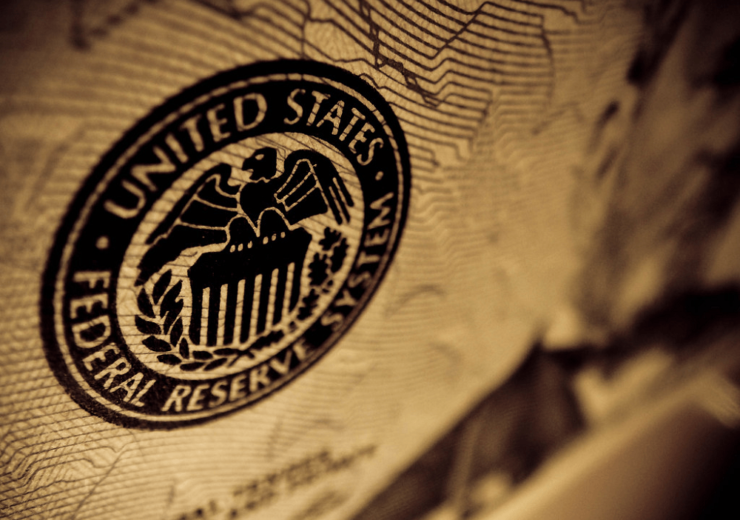With global trade tensions simmering and Brexit uncertainty rife, there was great interest in the US and UK base interest rate decisions this week

The US Federal Reserve cut interest rates for the second time in a decade (Credit: Kurtis Garbutt/Flickr)
Both the UK and US central banks made much-anticipated policy announcements yesterday, with the base interest rate in both countries under the microscope amid a global economic slowdown and major uncertainties across markets.
The US Federal Reserve cut interest rates for the first time since 2008, by 0.25% to the 2% to 2.25% range, in a move that was widely expected although not as aggressive as some — including President Trump — would have liked.
In the UK, the Bank of England maintained interest rates at the 0.75% level, while cutting its growth forecast for the UK to 1.3% for 2019 and 2020, down from 1.5% and 1.6% respectively.
These forecasts were made assuming the UK leaves the European Union with some form of deal — leaving the Bank warning growth could be hit harder in the event of a no-deal scenario.
US Federal Reserve cuts base interest rate for first time since 2008
The US Federal Reserve has been under pressure to make an interest rate adjustment to boost the US economy amid sluggish growth.
Last month, a senior JP Morgan Private Bank boss put the chances of a recession in the country next year at ‘one in three’, as the trade stand-off with China impacts market confidence.
President Trump had been calling for an aggressive interest rate cut and was unimpressed with the minimal adjustment announced by Fed chairman Jerome Powell.
What the Market wanted to hear from Jay Powell and the Federal Reserve was that this was the beginning of a lengthy and aggressive rate-cutting cycle which would keep pace with China, The European Union and other countries around the world….
— Donald J. Trump (@realDonaldTrump) July 31, 2019
In a tweet, the president wrote: “As usual, Powell let us down, but at least he is ending quantitative tightening, which shouldn’t have started in the first place.
“What the market wanted to hear from Jay Powell and the Federal Reserve was that this was the beginning of a lengthy and aggressive rate-cutting cycle which would keep pace with China, the European Union and other countries around the world.”
Mr Powell termed the rate cut a “mid-cycle adjustment”, leaving open the possibility of further revisions to the base rate later in the year.
He said: “As Federal Open Market Committee contemplates the future path of the target range for the federal funds rate, it will continue to monitor the implications of incoming information for the economic outlook and will act as appropriate to sustain the expansion, with a strong labour market and inflation near its symmetric 2% objective.”
Further US interest rate cuts ‘likely’ later in the year
Rick Patel, portfolio manager at investment services firm Fidelity International, said: “Although the US economy is still expanding at a relatively healthy pace, continued below-target inflation, a slump in business investment, and the prolonged presence of external uncertainties provided sufficient reason for a precautionary cut.
“‘Insurance’ cuts were successful in 1995-96, when the Fed implemented three cuts within seven months, taking rates from 6% to 5.25%, and managed to extend the economic upcycle by another six years to early 2001.
“In the current cycle, it is likely that, unless incoming economic data improves significantly during the next couple of months, a further cut will be implemented later this year.
“The Fed indicated that it will remain data-dependent in determining the timing and size of future rate adjustments, with the reference to ‘size’ indicating that a larger than 0.25% adjustment remains a possibility as a next step.
“Assuming that the cuts have at least some of the desired effects, and inflation expectations move closer to the targeted range, we would expect the Fed to be very reluctant to use up its firepower before the next real recession hits.”
Bank of England holds UK base interest rate steady, and cuts growth forecast
In the UK, the Bank of England’s Monetary Policy Committee (MPC) voted unanimously to maintain its 0.75% interest rate, as Brexit uncertainty continues to dominate the economic outlook.
The Bank also revised down its growth forecast for the UK economy over the next two years, and suggested a one in three chance of it shrinking in the early part of next year.
Chief economist at market analysis firm Dun & Bradstreet Markus Kuger said: “It was widely anticipated that the Bank of England would maintain the bank rate given the continued uncertainty in the UK market.

“Although the UK’s long-term economic potential exceeds that of most other European economies, Dun & Bradstreet has issued a ‘deteriorating’ country risk outlook in response to slowing economic growth, stagnation in interest rates and fluctuations in the value of sterling – which has dropped further against the dollar.
“Following the appointment of a new prime minister, we believe there is an increased risk of a no deal Brexit in October, and that a general election before the end of the year is likely.
“With so much still to be confirmed ahead of October’s Brexit deadline, planning for the various potential scenarios is a daunting task for many businesses.”
Decision to maintain UK base interest rate ‘surprising’ given global uncertainties
Bank of England governor Mark Carney noted that “profound uncertainties” over the future of global trade and the outcome of Brexit are weighing heavily on the UK’s economic performance, warning that a no-deal exit from the EU would cause “an instantaneous shock” to the economy, both in terms of supply and demand.
Fidelity International portfolio manager Sajiv Vaid found the Bank’s decision not to cut interest rates “surprising” given the impact of these uncertainties on growth and inflation and the trend for other central banks around the world to introduce stimulus measures.
Vaid said: “Slower growth, led by Brexit uncertainty and modest inflation, will prevent the Bank from raising rates, despite the statements to the contrary from the MPC over the past year.
“It is tempting, when looking at domestic factors such as house prices, retail sales and industrial production, to conclude that the change in stance is solely reflective of the slower domestic growth driven by Brexit uncertainty.

“However, it is clear that external factors have also been in play since the start of the year, with rising protectionist rhetoric with regards to trade and weaker global growth contributing to a change in tack by the MPC, as growth projections for this year and next have been downgraded.
“The Bank is also in the unenviable position of having to set monetary policy against a backdrop where there is still no conclusion to the future relationship with Europe — as well as the odds of a no-deal Brexit increasing in recent months, a potential general election, and a government seeking to loosen the fiscal purse strings regardless of how things play out with Europe.
“The change in tact from austerity to fiscal stimulus regardless of Brexit is particularly challenging when the Bank still appears to have sympathy with the view that the UK remains close to trend growth and full employment, despite the near-term underperformance.
“If the UK does leave the EU, I would expect a comprehensive package of both monetary and fiscal loosening that may be positive for UK government bonds and UK risk assets in the short-term, but the more medium-term outcome remains highly uncertain.”
